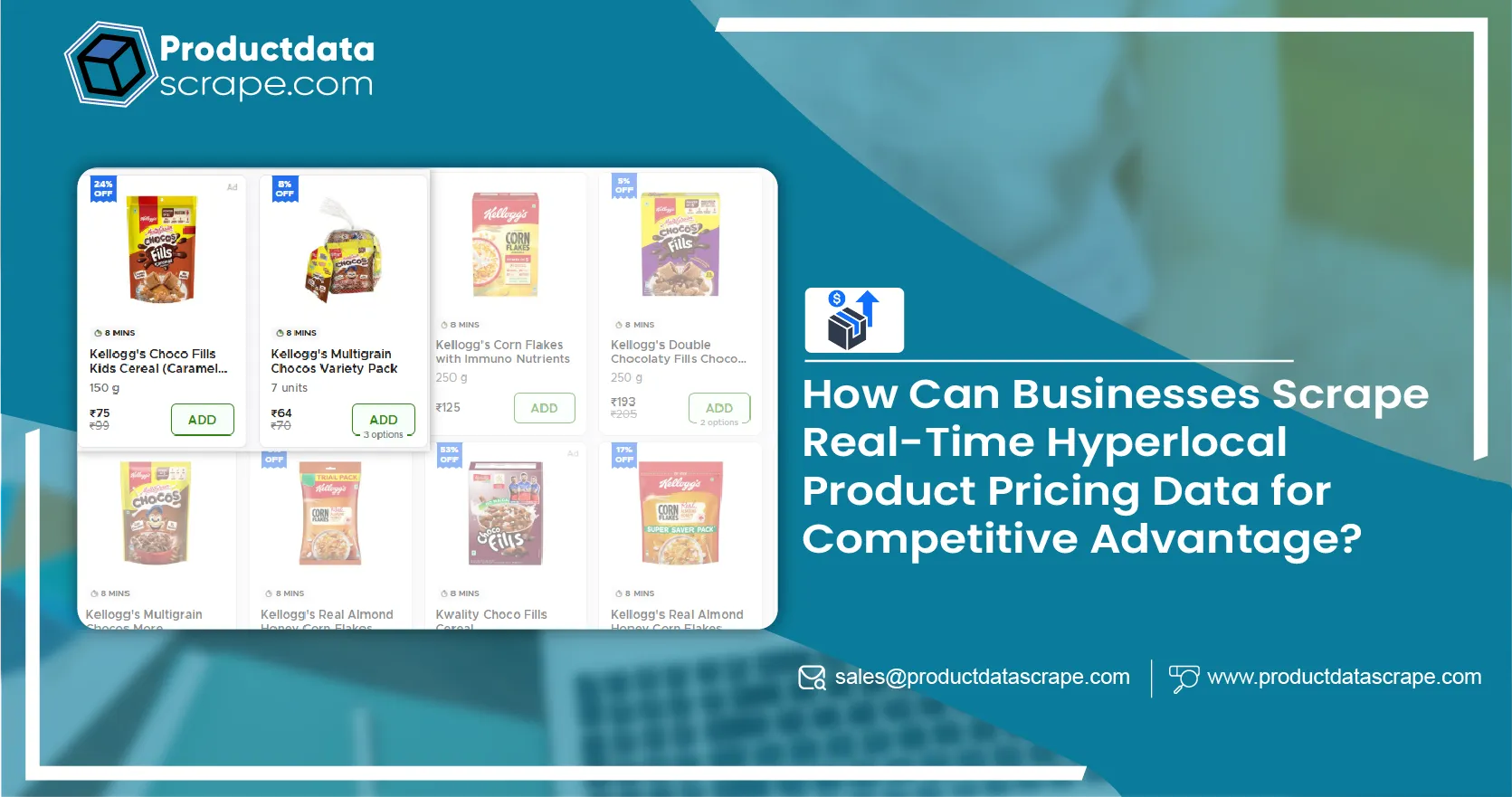
Introduction
In an era dominated by digital consumption and real-time decision-making, pricing is not just a factor but the deciding factor for most consumers. For businesses operating in the fast-paced landscape of local commerce, having access to real-time product pricing data offers a competitive edge. Whether you're a consumer intelligence platform, an e-commerce aggregator, or a grocery delivery startup, the ability to Scrape Real-Time Hyperlocal Product Pricing Data can redefine how you understand local market dynamics.
This blog explores the power of hyperlocal pricing intelligence, its importance in today's grocery and retail ecosystems, and how data scraping fuels intelligent pricing strategies.
The Rise of Hyperlocal Commerce
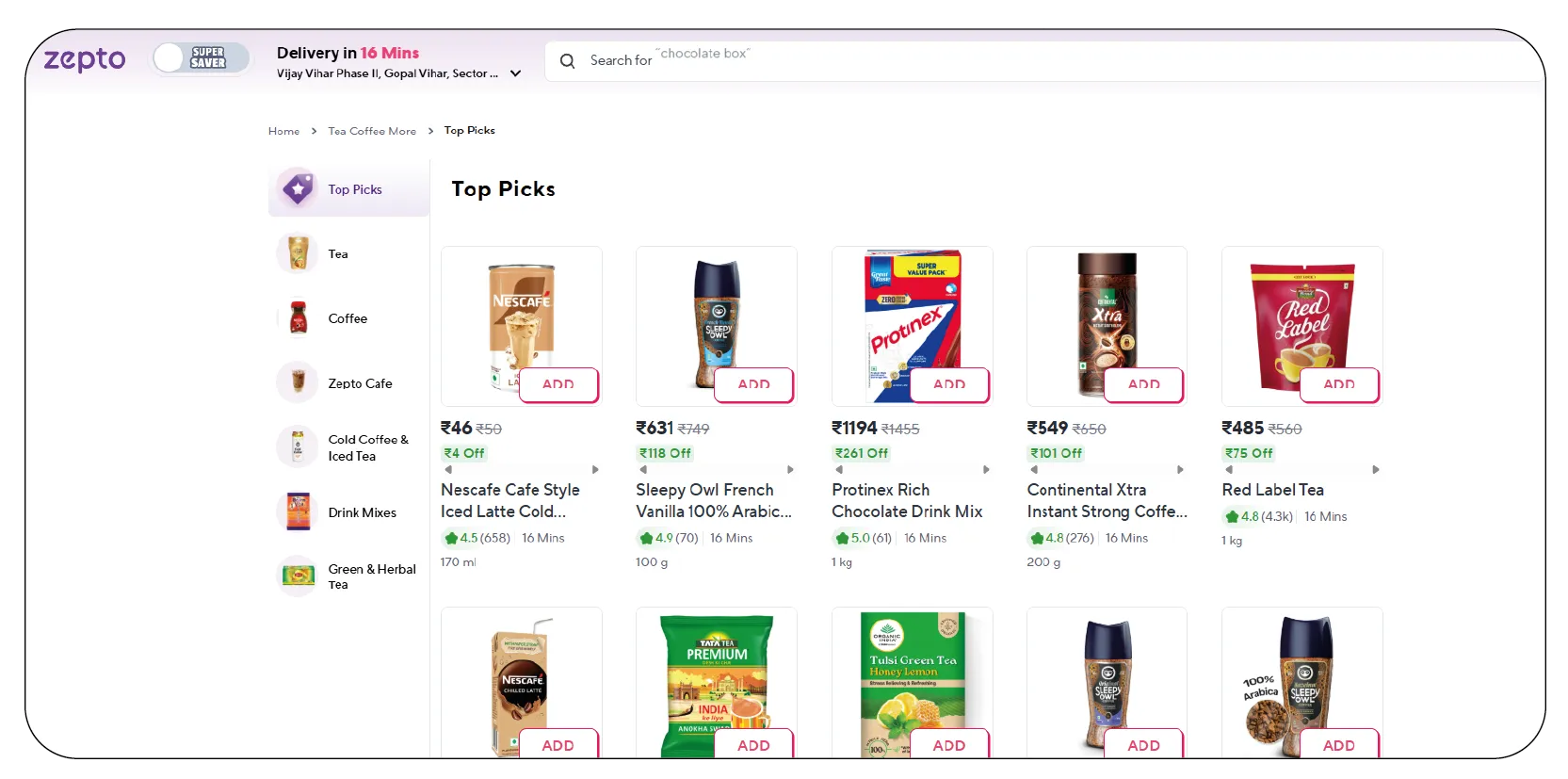
Hyperlocal commerce refers to buying and selling within a narrow geographical area, such as neighborhoods or towns. Apps like Zepto, Blinkit, Instamart, and Swiggy Instamart have revolutionized grocery and household essentials delivery with 10–20-minute fulfillment windows. These models thrive on dynamic pricing and inventory decisions that are extremely sensitive to neighborhood-level trends.
Real-Time Hyperlocal Market Price Scraping has become an essential technology layer in such a fast-moving environment. Retailers and data platforms depend on this process to gather real-time product-level pricing, discount patterns, availability status, and delivery charges from hyperlocal stores.
Why Real-Time Pricing Data Matters?
Pricing strategies no longer rely on static market data or competitor price lists updated weekly. In the hyperlocal space, prices fluctuate daily based on demand surges, promotions, or stock changes.
Let's explore why real-time pricing data is pivotal:
- Dynamic Competitor Benchmarking: Compare prices of the same SKU across different retailers in the same vicinity.
- Optimized Promotions: Run hyper-targeted discount campaigns aligned with local competitors.
- Inventory & Supply Chain Insights: Determine which products are frequently out-of-stock or overpriced locally.
- Consumer Loyalty: Offer price matching or lowest-price guarantees backed by real-time data.
- Local Trend Monitoring: Track emerging demand patterns in specific neighborhoods.
With a Real-Time Product Price Scraper for Hyperlocal Markets, businesses gain precision intelligence that drives smarter business decisions.
Core Use Cases of Hyperlocal Price Scraping
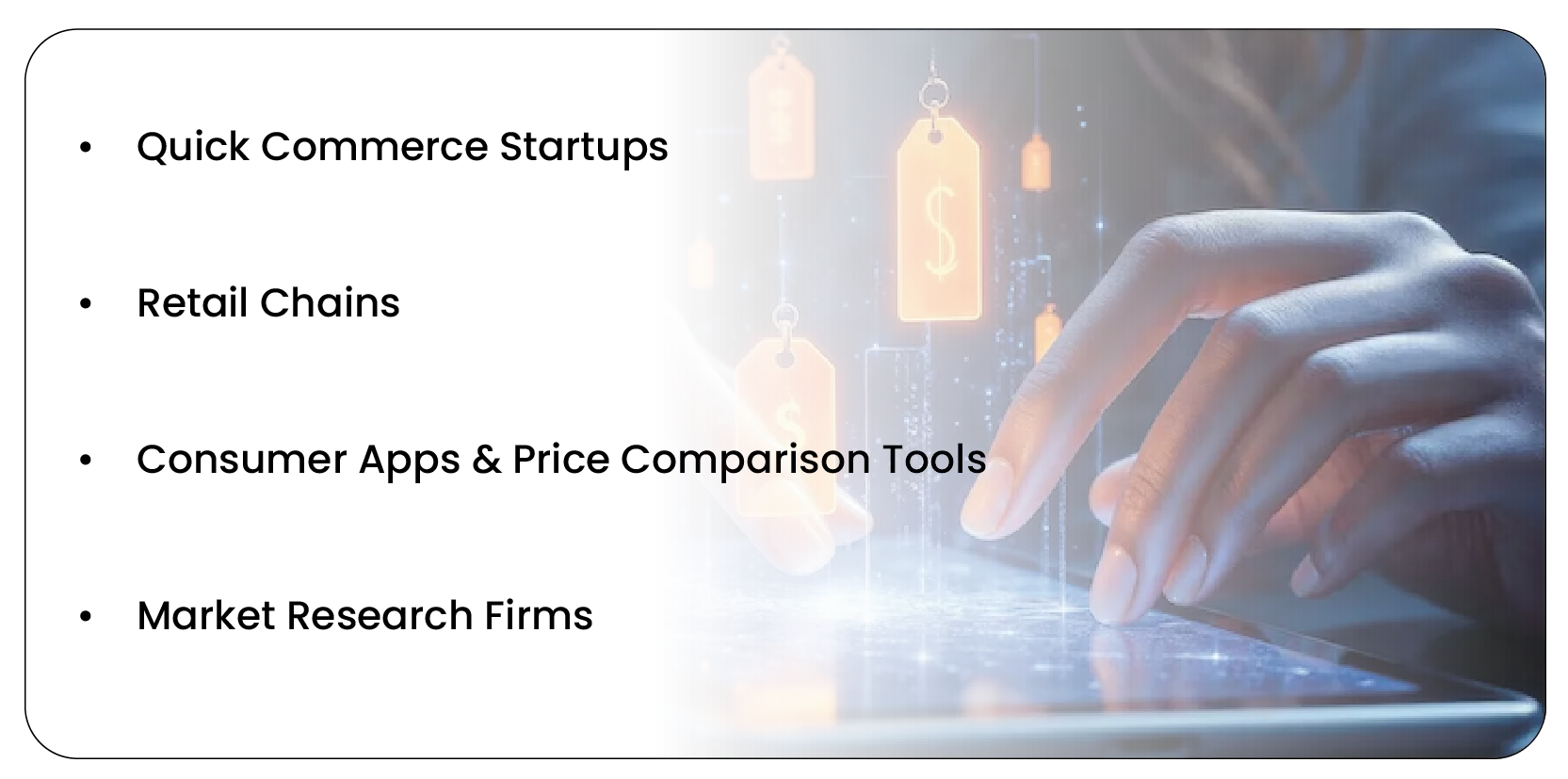
Hyperlocal pricing data benefits multiple stakeholders across industries. Some of the most prominent applications include:
- Quick Commerce Startups: Startups like Blinkit or Zepto use pricing intelligence to ensure their offerings remain competitive in each delivery zone. They must understand what competitors charge for onions, Maggi, milk, or toilet cleaners across neighborhoods.
- Retail Chains: Brands like Big Bazaar or Reliance Smart compare their hyperlocal pricing to Kirana stores and other chains Web Scraping Real-Time Prices from Hyperlocal Retailers. This data helps regional managers adjust pricing at the store level.
- Consumer Apps & Price Comparison Tools: Apps that compare grocery prices across local stores require real-time scraping infrastructure to ensure accurate and current results for users.
- Market Research Firms: Consulting and analytics firms involved in FMCG or retail studies use pricing data to assess competitiveness, pricing elasticity, and consumer trends across cities and zones.
Hyperlocal Pricing Data in the Grocery Ecosystem

The grocery segment is the largest beneficiary of hyperlocal pricing insights. With highly elastic pricing and frequent stock rotation, groceries demand a responsive pricing intelligence layer.
Using Scraping Live Product Prices from Hyperlocal Markets, platforms can track:
- Price differences for essentials like rice, flour, and cooking oil across areas.
- Time-based discount strategies like "Happy Hours" or "Midnight Deals."
- Seasonal demand surges, such as festive pricing or summer stock shifts.
- Fulfillment charges and minimum order thresholds per location.
Additionally, Grocery App Data Scraping Services
are widely adopted by analytics agencies and food delivery tech firms that build consumer behavior models based on pricing trends.
Technologies Powering Hyperlocal Price Scraping
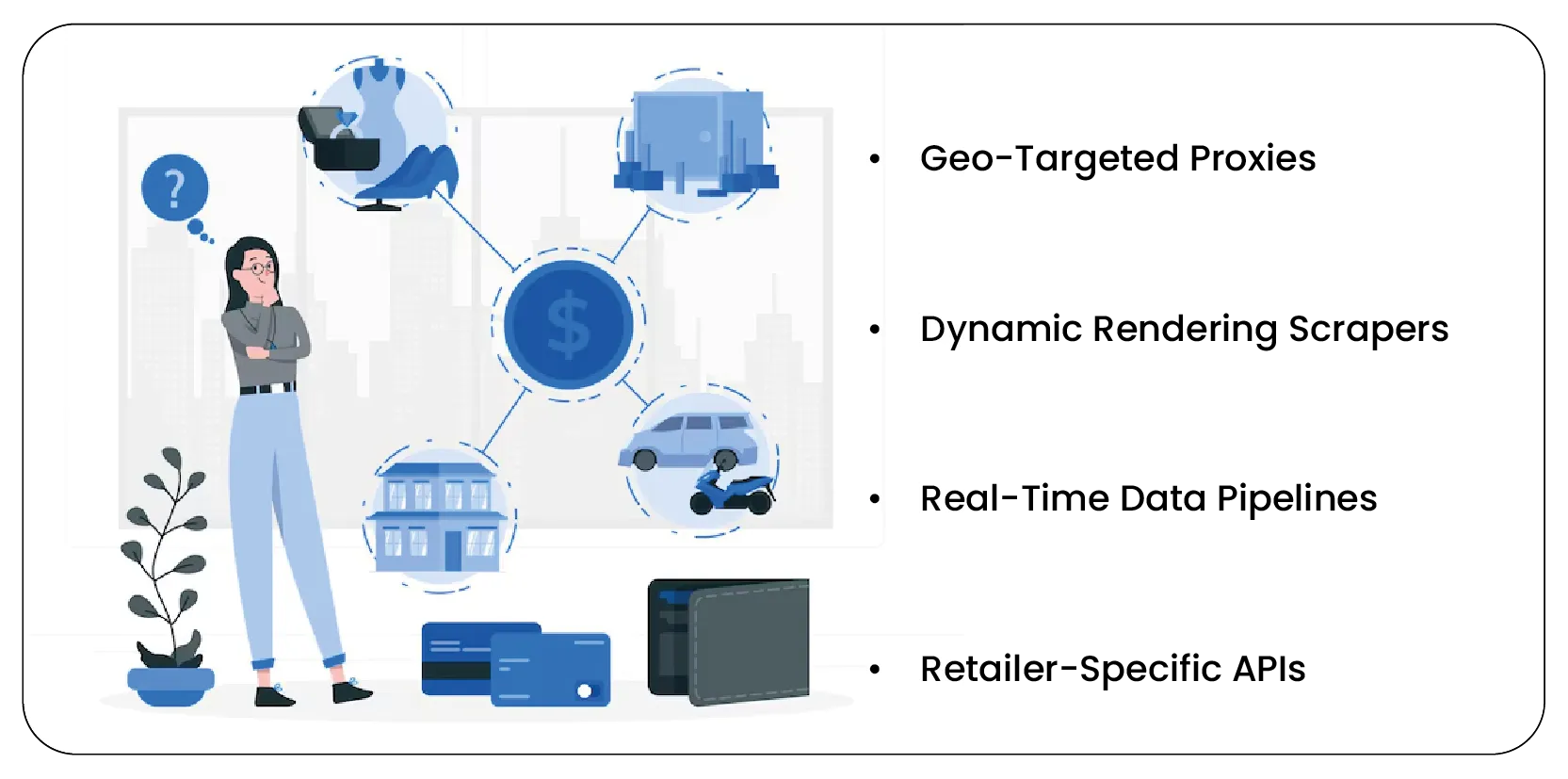
To successfully Scrape Hyperlocal Product Pricing in Real-Time, advanced scraping infrastructure is required. This includes:
- Geo-Targeted Proxies: Emulate user access from specific zip codes or GPS locations.
- Dynamic Rendering Scrapers: Extract data from JavaScript-rendered pages and in-app data.
- Real-Time Data Pipelines: Store and analyze prices with sub-minute latency.
- Retailer-Specific APIs: Some platforms reverse-engineer internal APIs used by apps to fetch exact product listings and prices.
While traditional scraping fails in highly localized apps, robust architecture allows us to fetch thousands of prices every few minutes from multiple zones.
Pricing Intelligence with API Access
Many businesses today rely on a Grocery Product Data Scraping API Services model for scalable access. These APIs return product names, sizes, brand details, price, availability, and location-specific parameters.
A typical pricing API response might include:
- Store name and location
- Product title
- Price (MRP and offer)
- Stock status
- Delivery time
- Timestamp
This API-based architecture enables businesses to plug real-time grocery pricing into dashboards, CRMs, or consumer apps seamlessly.
Connect with us now to power your business with reliable, real-time hyperlocal product pricing data scraping solutions!
Contact Us Today!
Turning Raw Data into Hyperlocal Intelligence
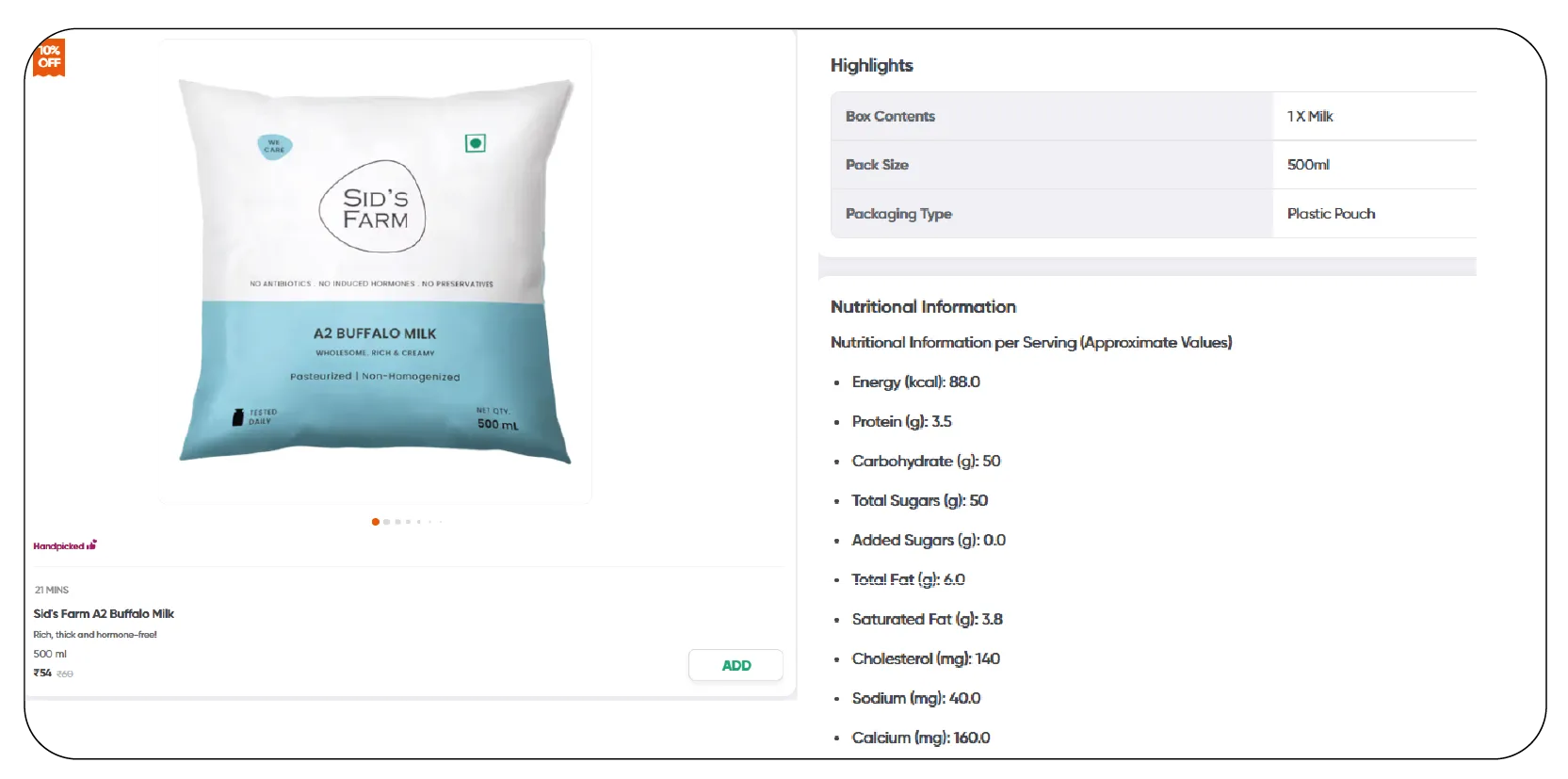
Data collection is just the first step. The real power lies in interpreting patterns across time and space.
With the help of Hyperlocal Data Intelligence, businesses can:
- Visualize which neighborhoods show pricing volatility
- Forecast price hikes or drops for perishables
- Create heatmaps of price competition
- Align supply chain priorities to consumer expectations
- Predict substitution behaviors (e.g., switching from premium milk to budget variants during inflation)
Such insights are invaluable for product planners, pricing managers, and marketing leaders in the hyperlocal delivery ecosystem.
Driving Innovation with Hyperlocal Grocery Data
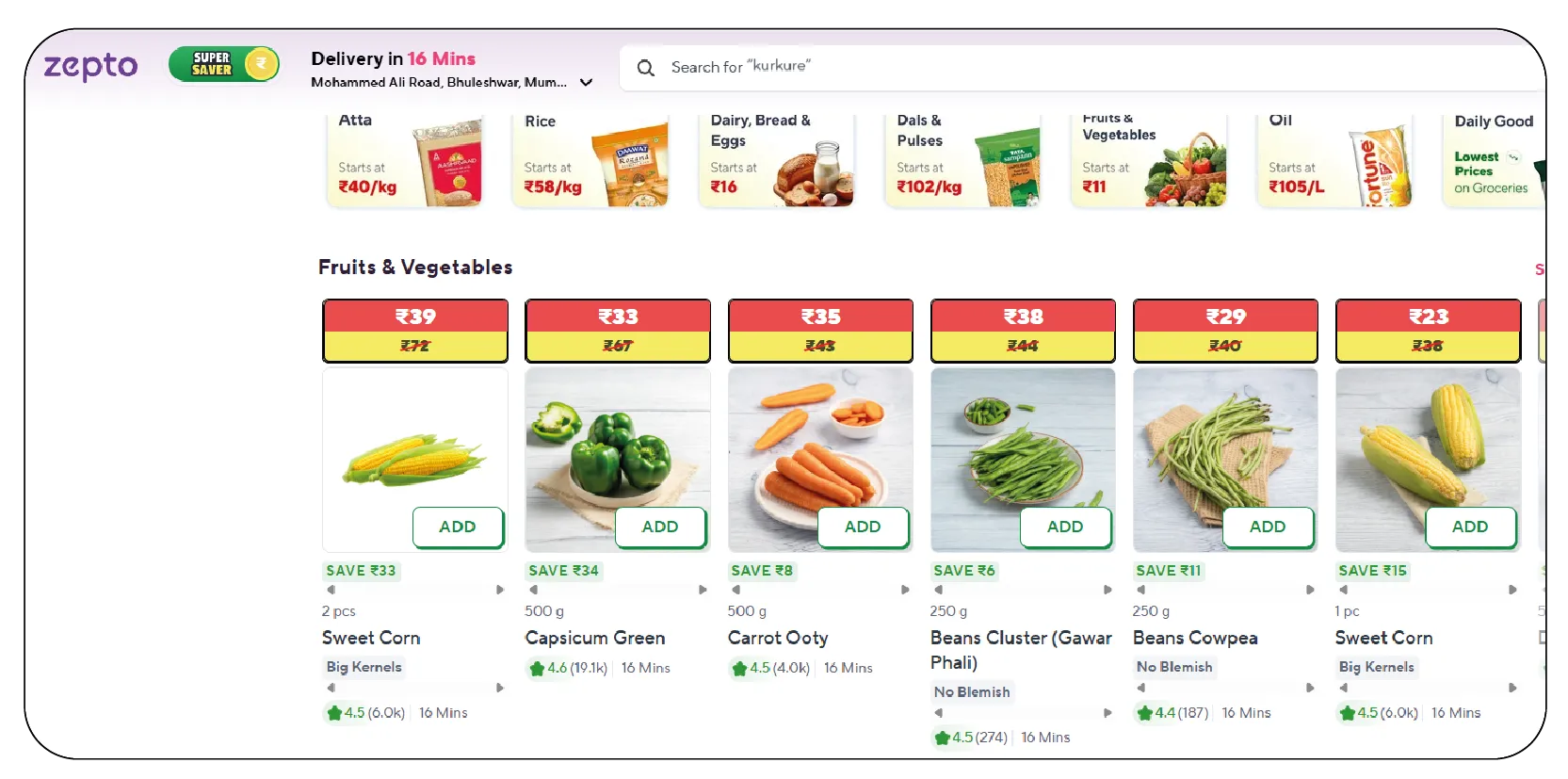
Scraping pricing data is about knowing not just what costs but also how customers react to them. That's where real-time data feeds into behavioral science and strategic planning.
- Brands experiment with flash sales localized to zip codes.
- Grocery apps test algorithm-driven price recommendations.
- Retailers use real-time data to reward price-conscious shoppers with loyalty points.
Web Scraping Quick Commerce Data allows for precise experimentation, helping brands and platforms validate what works right now.
Building the Ultimate Grocery Store Dataset
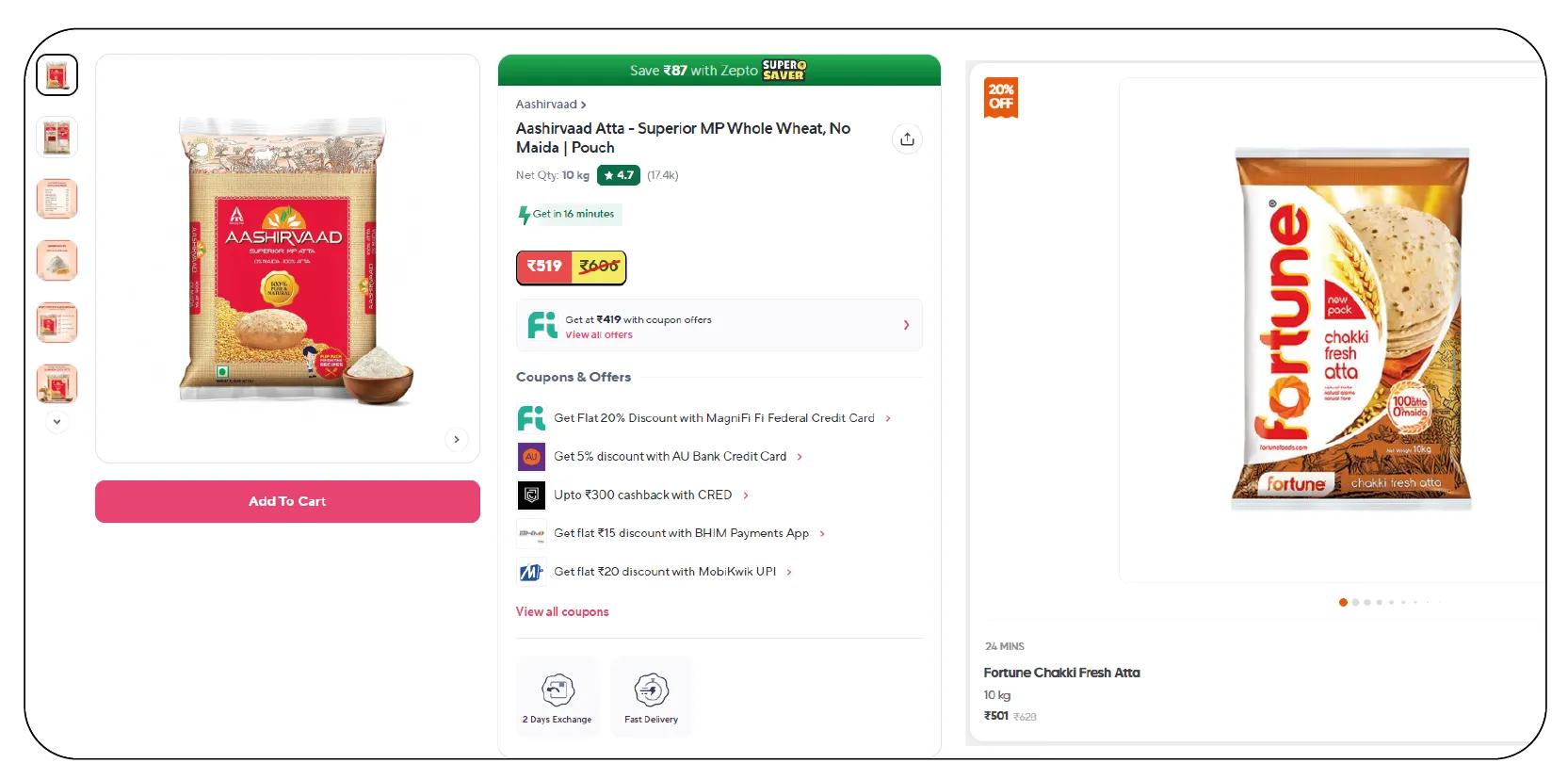
Over time, continuous scraping across multiple platforms can generate a rich Grocery Store Dataset —a historical log of pricing, stock levels, discounts, and brand trends. Such datasets can be used for:
- Training machine learning models on pricing behavior
- Feeding price prediction engines
- Competitive benchmarking reports
- Hyperlocal inflation analysis
- Brand share tracking at the neighborhood level
When structured properly, this dataset becomes a company's most valuable asset in outmaneuvering competition at a local level.
How Product Data Scrape Can Help You?
- Customized Data Extraction: We tailor scraping solutions to your specific needs—whether it's product pricing, availability, or hyperlocal delivery information—so you only get relevant, structured data.
- Real-Time Data Feeds: Access dynamic, up-to-the-minute pricing and stock data from multiple hyperlocal platforms, ensuring your insights are always current.
- Geo-Targeted Accuracy: We use location-specific proxies and methods to extract data relevant to each zip code or locality, providing precise hyperlocal intelligence.
- Scalable API Access: Our APIs deliver clean, ready-to-integrate datasets across formats like JSON or CSV, compatible with your dashboards, BI tools, or ML models.
- Compliance & Data Quality Assurance: We prioritize ethical scraping and deliver high-accuracy datasets with built-in deduplication, standardization, and format validation.
Final Thoughts
The future of commerce is hyperlocal, pricing is its most sensitive lever in crowded markets where every rupee or cent counts; real-time insights offer game-changing clarity. With the proper infrastructure, businesses can Scrape Real-Time Hyperlocal Product Pricing Data and translate that intelligence into pricing power, customer loyalty, and sustainable growth.
Everyone benefits from accessing live, localized, and actionable pricing data from grocery apps to retail brands and price comparison engines. The next decade of commerce will be won—not by those with the lowest prices—but by those with the best pricing intelligence.
At Product Data Scrape, we strongly emphasize
ethical practices across all our services,
including Competitor Price Monitoring and
Mobile App Data Scraping. Our commitment to
transparency and integrity is at the heart of everything we do. With a global presence and a
focus on personalized solutions, we aim to exceed client expectations and drive success in
data
analytics. Our dedication to ethical principles ensures that our operations are both
responsible
and effective.










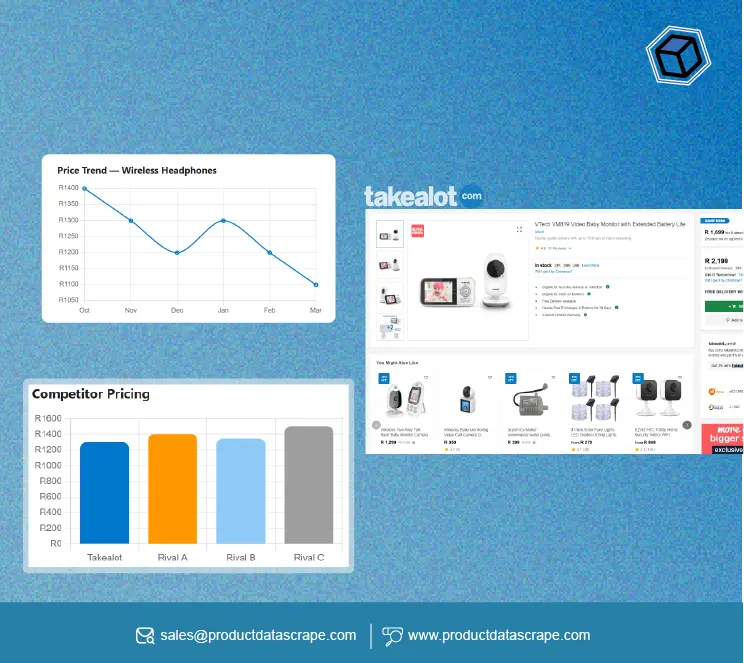

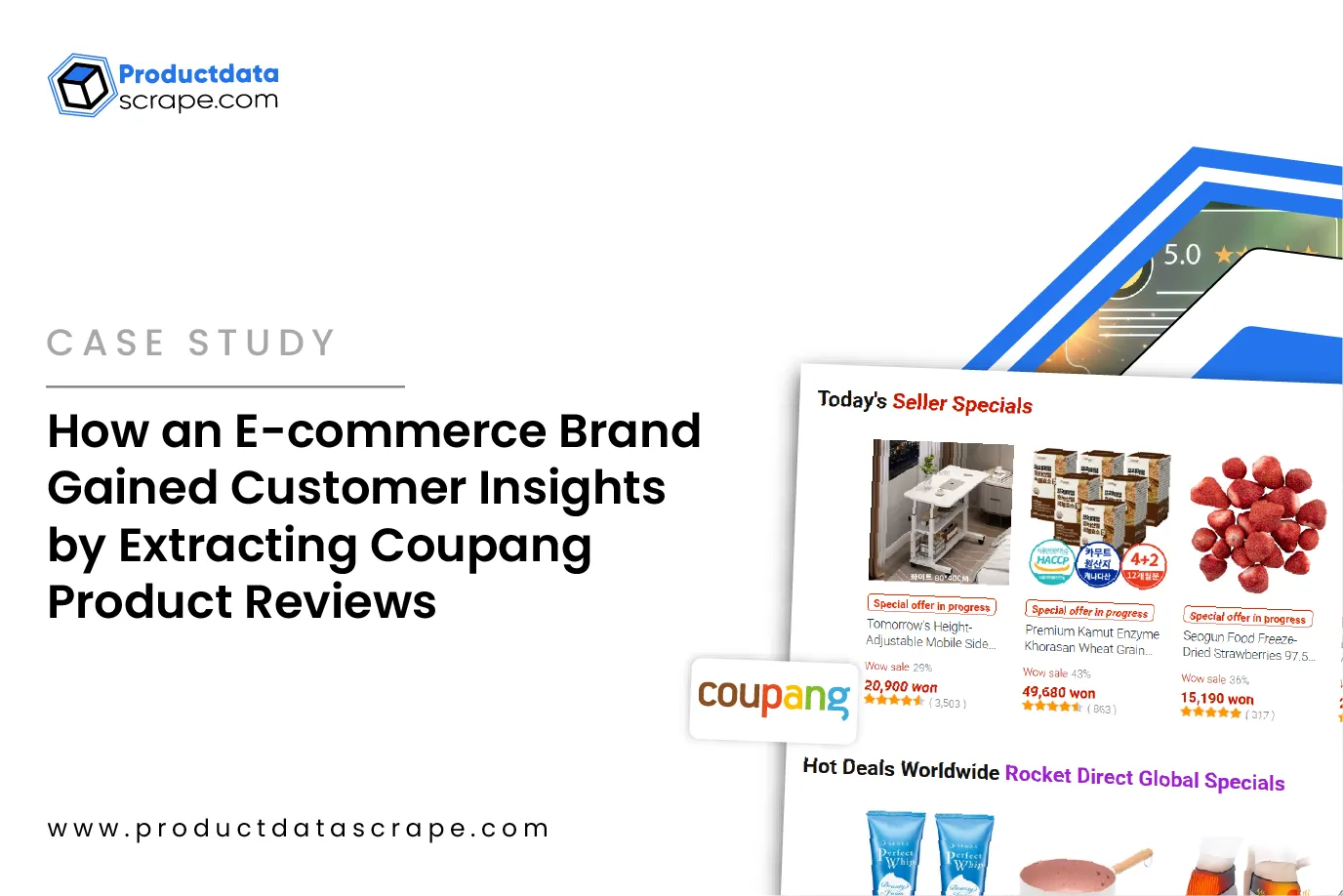










.webp)
-01.webp)

.webp)
